
MANUFACTURER'S SPECIFICATIONS
Type: Dynamic, equalizer (switch-selectable).
Frequency Response: 50 to 15,000 Hz.
Polar Pattern: Cardioid (unidirectional), uniform with frequency, symmetrical about axis.
Impedance: Rated 150 ohms (170 ohms actual). For microphone inputs rated 25 to 600 ohms. (For optimum filter operation, load impedance should be 100 ohms or greater.)
Output Level At 1000 Hz: Open circuit voltage 81 dBV/microbar (-61 dBV/Pa); power level, -59 dBm.
Phasing: Positive pressure on diaphragm produces positive voltage on pin 2 of plug.
Filter Switches: Four filter switches in case. Switches provide approximately 6 dB cut at 190 (LO), 560, 1650, and 4900 (HI) Hz. (See Fig. 3.) Filter attenuation varies slightly with load impedance.
Cables: 4.6 m (15 ft.) single conductor shielded, 3 pin, female A3-type plug on microphone end and 1/4 in. phone plug on equipment end. 910 mm (36") adaptor cable with 1/4" phone jack and 1/8" mini -phone plug connectors.
Swivel Adaptor: Adjustable through 90° from vertical to horizontal, permits easy removal for hand-held use, mounts on stands having 5/8"-27 thread.
Operating Temperature: 40° to 74°C (130° to 190°F).
Case: Satin chrome die casting with Armo-Dur grille.
Cartridge Shock Mount: Internal rubber vibration isolator.
Dimensions: Head end 35.7 mm (1-13/32") Dia., plug end 20.6 mm (13/16") Dia., overall length 159.5 mm (6 9/32").
Weight: 268 g (9 1/2 oz.) less cable.
Model 516EQ-PR: Same as Model 516EQ, except designed for stereo tape recording. Two microphones, windscreens, swivel adaptors, microphone cables, and mini -plug cables are supplied in a single carrying case.
Prices: Model 516EQ. $75.00; Model 516EQ-PR, $135.00.
The Shure 516EQ microphone is similar to those of the familiar Unidyne series, but is specifically intended for home recording. The dynamic cartridge is smaller and lighter in weight than those in the Unidyne microphones, which results in lower sensitivity and a somewhat poorer directional pattern, but a more uniform frequency response. The leftover space has been used to advantage by incorporating a large, compliant vibration isolator surrounding the cartridge, and a tiny equalizer circuit and switch assembly in the side of the case. The result is a microphone plus equalizer that is comparable in size, weight, and cost to a Unidyne microphone.
The 516EQ-PR is a complete microphone outfit for stereo recording. The cables are supplied complete with plugs to mate with jacks on most popular types of tape recorders.
Foam windscreens are provided which are large enough to keep vocalists from swallowing the microphone, as well as providing excellent "pop" and wind protection. The 516EQ is designed for use with low impedance inputs only. The 3-pin plug on the microphone permits use with standard extension cables and matching transformers that would be needed if your recorder has high impedance inputs. It may also be used with balanced low impedance inputs, if you provide suitable cables.
The 516EQ-PR set, with the short cables supplied, is ideal for the person with a stereo cassette recorder. Monitor phones are needed if you are to hear the effects of changing the equalizers. If the microphones are not too far from the recorder, you can conveniently experiment with the equalizer switches.
The 516EQ could be used in multiple microphone recording or reinforcement applications. Each microphone could be "tuned" specifically for each musical instrument or vocalist. Of course, a lot of time would be required for experimentation.
The equalizer assembly consists of four very small two -position switches mounted on a small circuit board. This assembly comprises four dip equalizers spaced about 1 1/2 octaves apart. Any or all may be switched "in" or "out." The switches are so small that a pencil may be required to activate them. Up to 16 different combinations may be selected.
Laboratory Tests
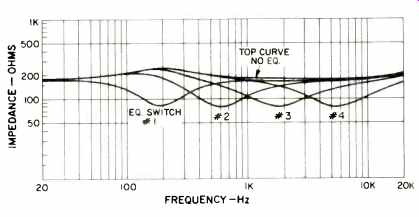
Fig. 1--Impedance composite of the Shure 516EQ.
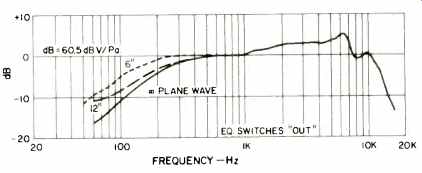
Fig. 2--Frequency response vs. distance.
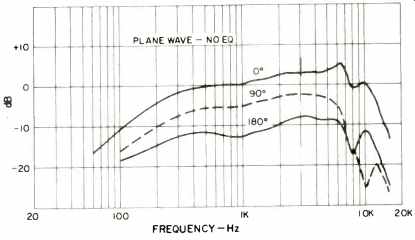
Fig. 3-Response vs. angle.
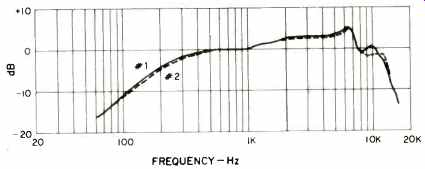
Fig. 4-Response of unit #1 vs. unit #2.
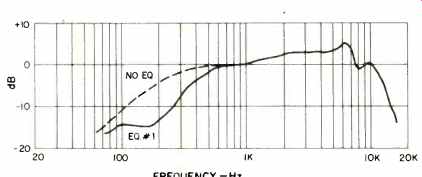
Fig. 5-Frequency response with equalization 1.
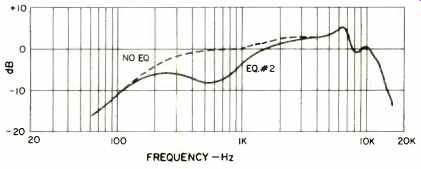
Fig. 6-Frequency response with equalization #2.

Fig. 7-Frequency response with equalization #3.
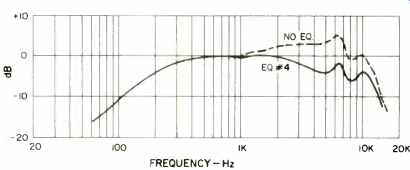
Fig. 8-Frequency response with equalization #4.
We anticipated some irregularities in impedance, as the manufacturer recommends a minimum load impedance of 100 ohms. The complete family of curves is shown in Fig. 1.
Total variation with frequency is 70 to 240 ohms. For optimum results, actual load should be about 1000 ohms, which corresponds to an unloaded 150-200 ohm input. Our numbering of equalizer switches is from low to high frequency, proceeding from the rear to the front switch. We decided that testing all 16 equalization selections was not necessary.
It was sufficient to make tests with no equalization, and with each switch in turn, for a total of five selections.
All of the frequency response tests were performed on the unit we designated number one, except for the test of stereo matching of both microphones. The frequency response without equalization is shown in Fig. 2. The response for plane wave (microphone 3 feet or more from source) agreed with the published curve. The quoted response of 50 to 15,000 Hz is erroneous under this standard test condition.
We believe a rating, for 10 dB down points, of 100 to 15,000 Hz is appropriate. To achieve minimum low frequency response for satisfactory results with cassette recorders and bookshelf speakers, the microphone must be close to the sound source. Our tests show that six inches is satisfactory.
There may be no problem with electronic instruments or drums in pop groups because the sound level at low frequencies is usually high. The 516EQ is not suited to distant miking of symphony orchestras. You may also encounter noise from your recorder if the sound level is low because of the low sensitivity of the microphone. Observe that our measured sensitivity was very close to the rated number.
The sensitivity is effectively lowered by use of the "dip" equalizers. With all equalizers "in," pickup of low sound levels may be difficult. See Fig. 3.
The frequency response remains rather uniform with angle, but the polar pattern is poor. The 90° response is only about 5 dB down, and the 180° is only 10 to 13 dB down. This will not mar the audio quality if the microphone is close to the source, but you might have problems with distant miking in reverberant rooms which is another reason to keep the 516EQ close to the source.
The two microphones are incredibly well matched in frequency response-see Fig. 4. This indicates excellent production uniformity plus a possibility of some selection and pairing of microphones. This result is a good reason to purchase the 516EQ-PR stereo pair, rather than individual 516EQ microphones.
Next, we measured the response for each equalization. Each curve is shown with the unequalized curve for comparison. The dip frequencies are reasonably close to those quoted, but the depth is generally a little greater than the 6 dB quoted. A change of 10 dB is perceived as a doubling of loudness. Six dB, in our opinion, is marginally low, and we are glad to see the greater amount of equalization. We believe the equalizers represent the best choice of frequencies and amplitudes that can be made with four On/Off switches. We checked loading effects on the equalizers with a 240 ohm load as shown in Fig. 9. I think you will agree that 240 ohms is about the lowest you would want to use.
Our phasing test revealed that the phasing at the phone plug tip (white wire) is negative. EIA standards RS -221 has no phasing requirements relative to microphones with single conductor shielded cable; we like the choice of pin #2 on the microphone for the positive terminal. If you mix the 516EQ with other microphones, be sure to check relative phasing, particularly if you're using the single conductor cables Shure has provided.
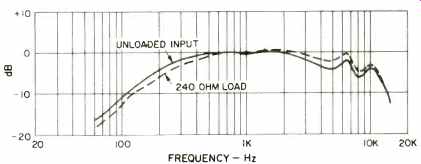
Fig. 9--Response vs. load at equalization #4 setting.
Subjective and Listening Tests
Wind and "pop" sensitivity is low without the windscreen and the same as our two reference microphones, an RCA BK -5B ribbon and a Shure 548. It is extremely low with the windscreen and the windscreen causes no perceptible change in voice quality. (A measurement, which is not shown, revealed only very small changes in high frequency response.) We rate the hum pickup as medium. It was higher than the BK -5B, but the same as the 548. Vibration sensitivity was medium, lower than the 548, but higher than the BK -5B. We are pleased with this result, because vibration sensitivity is quite a problem with dynamic cardioid microphones.
The biomechanics or "feel factor" is good. When the microphone is hand-held, there is no danger of the performer changing equalizers as the switches are well recessed and difficult to activate with the fingers alone. The equalizers are mounted well forward and do not interfere when you replace the microphone in its swivel. The quality and durability of the microphone is excellent. The cables supplied are a little thin and fragile but properly strain relieved at the plugs. For heavy duty applications, we recommend you use heavy 2-conductor shielded rubber or neoprene cable.
The carrying case of the 516EQ-PR set is attractive and has foam inserts to hold the microphones. An instruction and data sheet is enclosed which should help the user to maximize performance in his particular applications. All 16 choices of equalization are shown by response curves and described with relation to effects on specific musical instruments. This shows that Shure has done a lot of application research on the 516EQ. We could not hope to checkout all of Shure's results by our listening tests. We found that the equalizer changes are easily perceived on voice. Vocals at 1 or 2 inches sounded best with equalizers number 1 and 4, but at six inches we preferred no equalization as the sound compared favorably to our standard BK-5B microphone with V2 response compensation. The 516EQ sounds "thin" compared to our BK-5B ("M" or flat response) when both are three feet or more from voices or musical instruments and we do not recommend it for distant miking of classical music for this reason, plus the possibility of signal-to-noise problems with some users.
The 516EQ sounds best when used close up to instruments or vocalists. You may also find the sound to be acceptable with the microphone three feet from musical groups having amplified or electronic instruments, if the sound level is high enough to prevent signal-to-noise problems. The loud bass instruments can usually benefit from some attenuation.
The 516EQ satisfies many requirements of home tape recording. The built-in equalizers make it a good buy for people who do not possess expensive equalization equipment, and we can recommend it for that purpose.
--Jon Sank
(Source: Audio magazine, Apr. 1977)
Also see:
Shure SM85 Unidirectional Condenser Microphone (Equip. Profile, May 1982)
Shure SM91 Microphone (Equip. Profile, Jun. 1986)
Shure SM89 Shotgun Condenser Mike (Dec. 1990)
Sennheiser MKH 40 Microphone (Equip. Profile, Jan. 1988)
= = = =